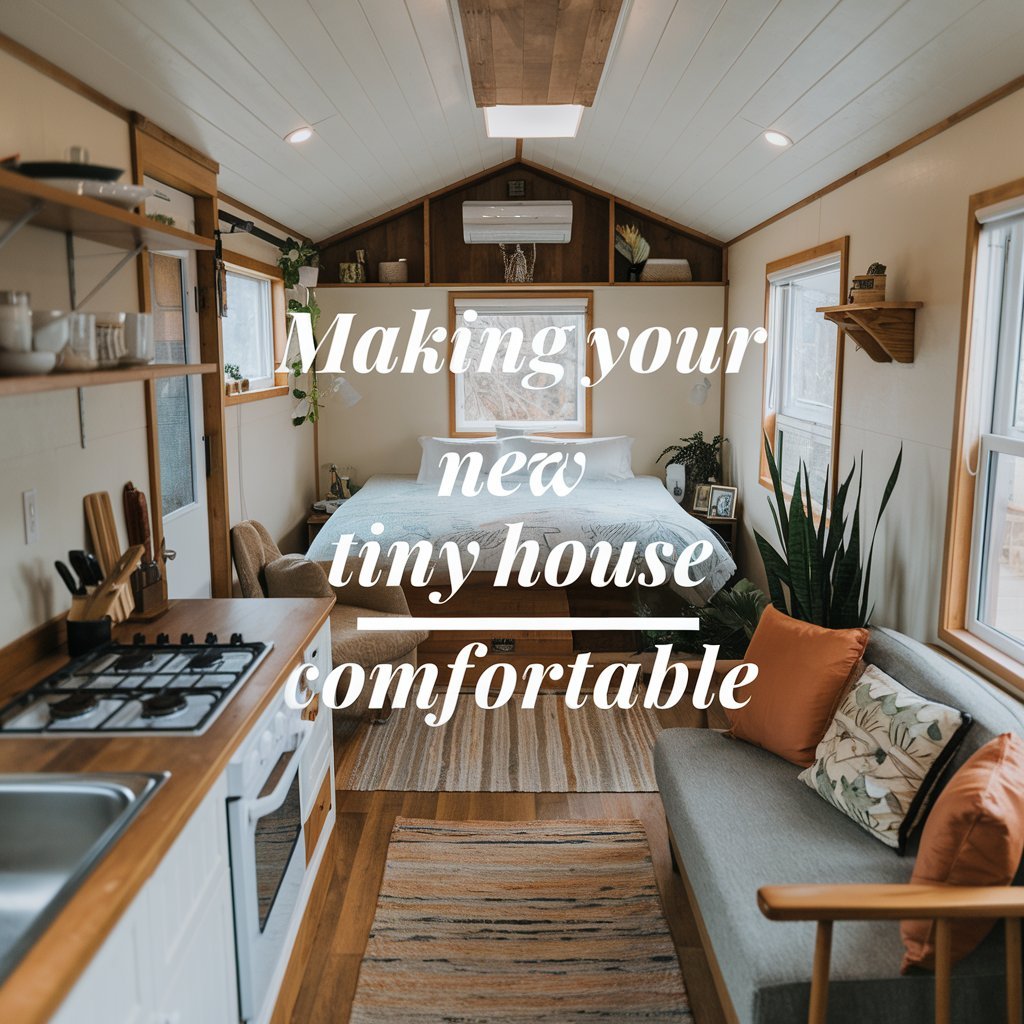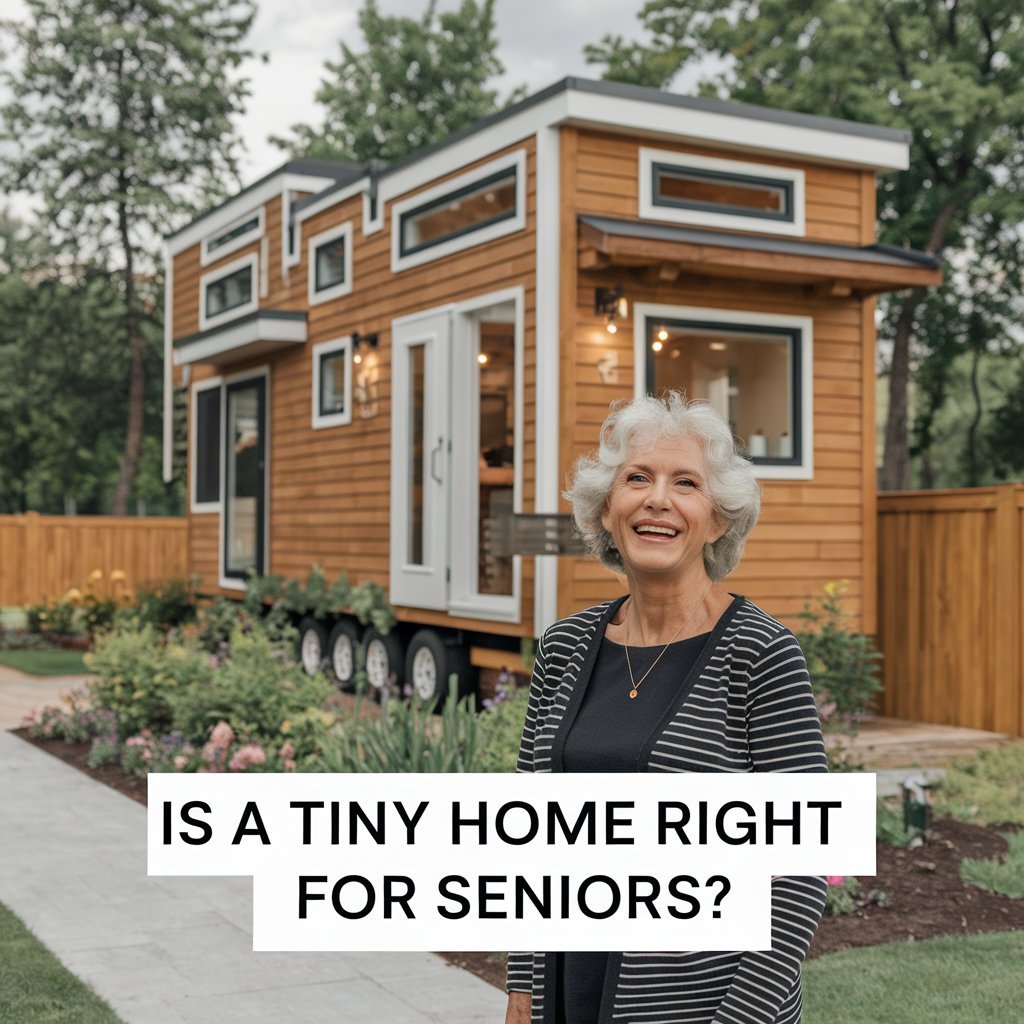More American partners are trading traditional homes for compact dwellings under 400 square feet. The Gerdes swapped their four-bedroom house for a 325-square-foot space with three humans and five pets. Adventure seekers Alexis and Christian thrive in 130 square feet while filming a cross-country documentary. These stories prove small-space living works with creativity and compromise.
Shared walls and limited privacy test even strong relationships. Yet 68% of tiny home residents report improved communication skills, according to a 2023 National Tiny House Survey. The key lies in intentional design and emotional awareness. Custom features like AJ and China Rose’s ceiling-mounted bed showcase how physical solutions support relationship needs.
This lifestyle demands new approaches to partnership. Proximity amplifies both joy and friction, turning minor habits into potential flashpoints. Successful pairs treat their tiny home as a relationship accelerator – a place to practice patience and grow together. While challenges exist, many find unexpected benefits like reduced stress and stronger bonds.
Table of Contents
Key Takeaways
- Compact living requires creative space solutions for relationship harmony
- Real couples successfully navigate sub-400 sq. ft. homes with pets and children
- Physical design choices directly impact emotional connection
- Small spaces magnify communication needs and opportunities
- Intentional routines prevent common friction points
- Conflict resolution becomes a daily practice in close quarters
Understanding the Dynamics of Tiny House Living
The shift to compact dwellings reshapes daily rhythms and partnership dynamics. Emily Gerde describes their former four-bedroom lifestyle as “frantically trying to get by” amid endless chores. Now, her family’s 325-square-foot home slashed Justin’s commute from 45 minutes to 15 steps – reclaiming 46 hours monthly for shared meals and board games.
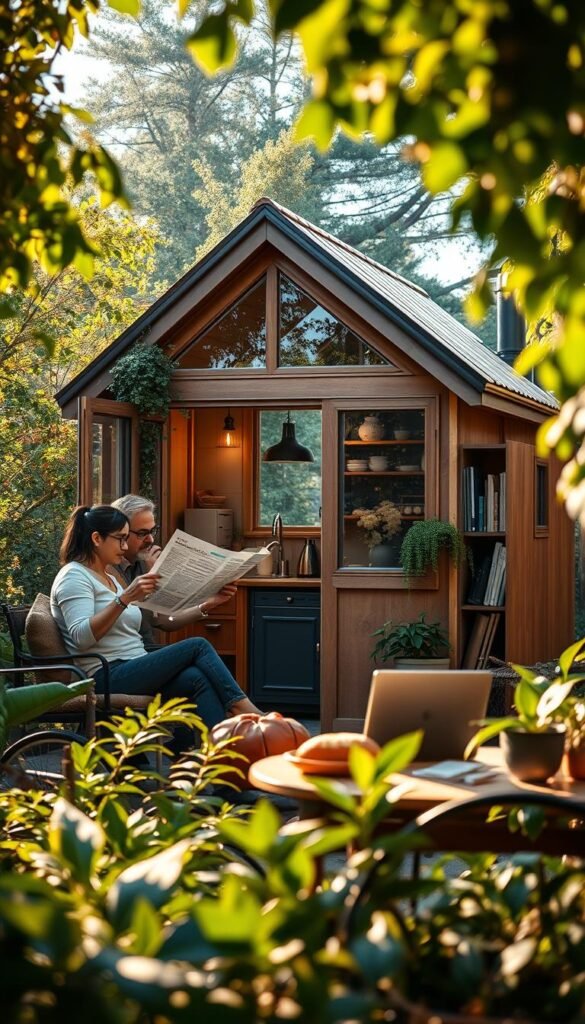
Space Redesigns Relationship Patterns
Morning routines become synchronized dances in tight quarters. Meal prep doubles as teamwork training in galley kitchens. Remote workers convert loft beds into offices by day. Evening wind-downs require mutual screen-time agreements. “Our space forces us to check in constantly,” notes Emily. Two-thirds of tiny dwellers report improved communication within six months.
Financial Liberation Fuels Connection
Mortgage-free living cuts financial stress by 62% compared to traditional homeowners. The Gerdes redirect $1,800 monthly savings toward family camping trips and pottery classes. Mobility lets them follow career opportunities while maintaining home stability – relocating twice without upheaval. Shared responsibilities evolve from chore charts to collaborative life design.
Communication and Conflict Resolution in Confined Spaces
Living in close quarters demands fresh approaches to partnership dynamics. Without room for physical separation, partners must develop communication skills that address tensions immediately. Alexis Stephens shares, “When frustration builds, we step outside – nature becomes our mediation room.” This strategy reflects a key principle: proactive resolution beats passive avoidance.

Techniques for Clear Dialogue and Active Listening
Successful pairs use structured methods to maintain harmony. Christian Parsons explains their approach: “We face issues head-on since there’s nowhere to hide.” Therapist Brian O’Neill recommends these practices:
- Daily 10-minute check-ins during shared meals
- Using “I feel” statements instead of blame
- Designating a visible “time-out” signal when emotions escalate
| Situation | Tiny Home Approach | Traditional Home Approach |
|---|---|---|
| Disagreement during chores | Immediate discussion at kitchen table | Separate rooms, delayed resolution |
| Need for personal space | Scheduled solo walks | Retreat to separate floors |
| Unexpected stress | Pre-arranged hand signal for pause | Unspoken tension buildup |
Preventing Misunderstandings in Compact Environments
Clarity becomes essential when shared spaces serve multiple functions. Partners benefit from:
- Visual calendars for scheduling alone time
- Dedicated zones for sensitive conversations
- Weekly relationship “maintenance” meetings
As O’Neill notes, “Tiny living turns communication into a survival skill – one that deepens trust through consistent practice.” By creating intentional habits, partners transform potential friction points into opportunities for connection.
Navigating Alone Time and Shared Spaces
Creating personal space becomes an art form in compact living environments. Partners often develop clever routines to honor their need for solitude while preserving connection. Successful pairs treat privacy like currency – intentionally budgeting moments apart to enrich time together.
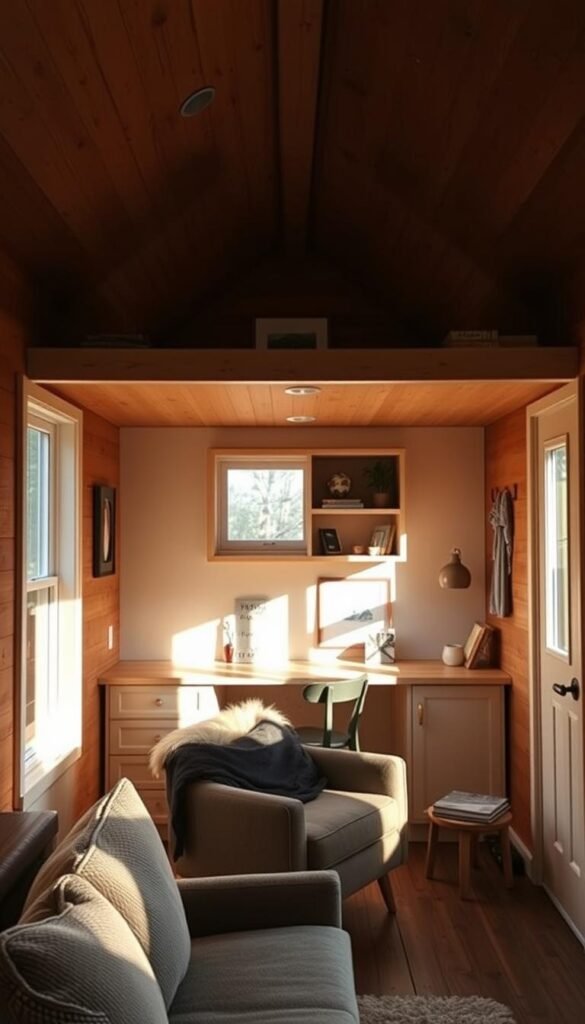
Finding Personal Quiet Spots and Scheduling Self-Care
Couples therapist Brian O’Neill suggests treating alone time like essential nutrition. “Use staggered schedules or outdoor areas for mental refreshment,” he advises. Real-world solutions include:
- Morning coffee on porch steps before shared activities
- Noise-canceling headphones during designated “quiet hours”
- Rotating access to prime relaxation zones
| Personal Space Solution | Tiny Home Approach | Traditional Home Approach |
|---|---|---|
| Reading Time | Loft nook with privacy curtain | Dedicated home library |
| Work Hours | Converted bathroom office | Separate study room |
| Conflict Cooling-Off | Pre-planned walking routes | Different floors |
Strategies for Embracing Intimacy Without Losing Individuality
AJ Zamora and China Rose prove shared spaces can foster both togetherness and independence. Their mechanical bed system preserves weekend movie marathons while allowing separate daytime uses. Key tactics include:
- Synchronizing calendars for balanced social schedules
- Establishing “no tech” zones for quality conversations
- Maintaining separate hobby kits in multi-purpose storage
Outdoor spaces often become relationship sanctuaries. Many partners report increased appreciation for shared experiences after intentional alone time. As O’Neill notes: “Space boundaries actually deepen connection when communicated clearly.”
Designing a Tiny Home to Support Relationship Harmony
Smart layouts transform compact dwellings into relationship-nurturing environments. Emily Gerde’s family proves functionality and connection coexist through clever design. Their 325-square-foot house features hidden compartments for homeschool materials and a wall-length bench that converts into a family gathering spot. “Every inch serves dual purposes,” she explains. Strategic planning prevents clutter from undermining partnership peace.
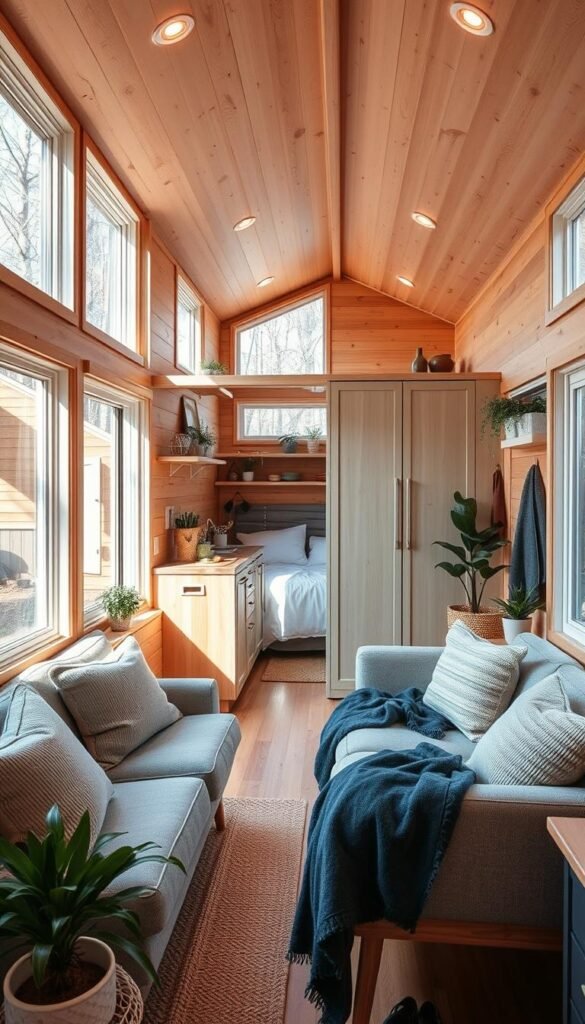
Custom Storage Solutions and Flexible Living Areas
AJ Zamora and China Rose reimagined sleep spaces with a ceiling-mounted bed that descends onto kitchen counters. This mechanical marvel preserves their Saturday movie tradition while freeing daytime floor space. Key design principles for relationship-focused homes include:
- Vertical storage systems with personalized compartments
- Convertible surfaces that adapt to different activities
- Dedicated zones for individual hobbies
Multi-functional furniture proves essential for growing families. The Gerdes’ bench doubles as toy storage and a dining area, while fold-down desks create temporary workstations. Flexible layouts accommodate changing needs – from new pets to additional children – without requiring major renovations.
| Design Element | Tiny Home Solution | Traditional Home Equivalent |
|---|---|---|
| Sleeping Area | Retractable ceiling bed | Separate bedroom |
| Storage | Staircase drawers | Walk-in closets |
| Workspace | Fold-out wall desk | Home office |
Successful designs balance shared and private areas. Many partners incorporate soundproof reading nooks or outdoor retreat spaces. As Emily notes: “Our home helps us be together without feeling crowded.” Thoughtful layouts turn physical limitations into relationship-strengthening opportunities.
How do couples handle conflict in tight tiny‑house spaces?
Real-life stories reveal how partners overcome friction in small living areas. Alexis Stephens and Christian Parsons credit their mobile lifestyle for keeping tensions low. “New landscapes reset our perspectives,” Alexis explains. Their 124-square-foot home on wheels forces immediate issue resolution – arguments get solved during dishwashing or bed-making routines.
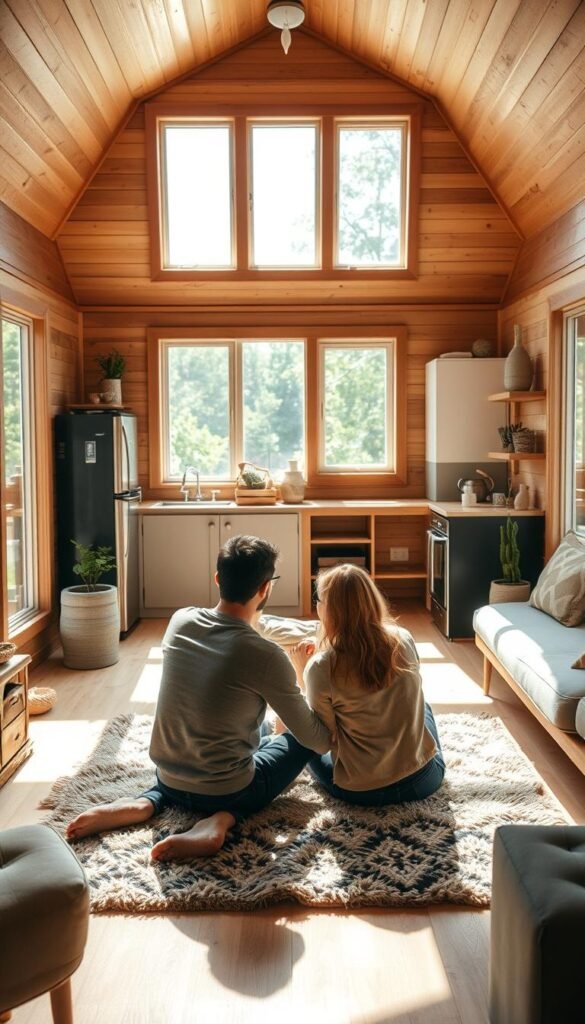
Proven Methods From Experienced Partners
Emily and Justin Gerde transformed nightly rituals into relationship safeguards. Borrowing from Justin’s parents, they practice forgiveness declarations before sleep. This habit prevents minor irritations from becoming major rifts. Their 325-square-foot home with three kids and pets demands daily emotional maintenance.
| Conflict Trigger | Compact Solution | Traditional Approach |
|---|---|---|
| Noise Sensitivity | Headphone hours schedule | Separate entertainment rooms |
| Privacy Needs | Prearranged walk times | Multiple floor retreats |
| Storage Disputes | Vertical organization systems | Spare closet spaces |
When Compact Living Reveals Deeper Issues
Documentary filmmakers highlight both successes and cautionary tales. Merete Mueller and Christopher Smith’s relationship ended but their friendship survived. “Our tiny home taught us communication tools that outlasted romance,” Mueller reflects. Their story shows alternative paths when shared spaces reveal irreconcilable differences.
Successful partners treat spatial limitations as collaboration opportunities. Outdoor areas become mediation zones, while mobile homes allow literal and figurative fresh starts. As Christian Parsons notes: “Our house keeps us honest – there’s no space for unresolved issues.”
Expert Advice and Practical Tips for Couples
Relationship specialists offer science-backed methods to strengthen bonds in compact homes. “Tiny living requires rewriting traditional relationship rules,” explains therapist Brian O’Neill. His clients report 73% improvement in conflict resolution after implementing structured communication systems.
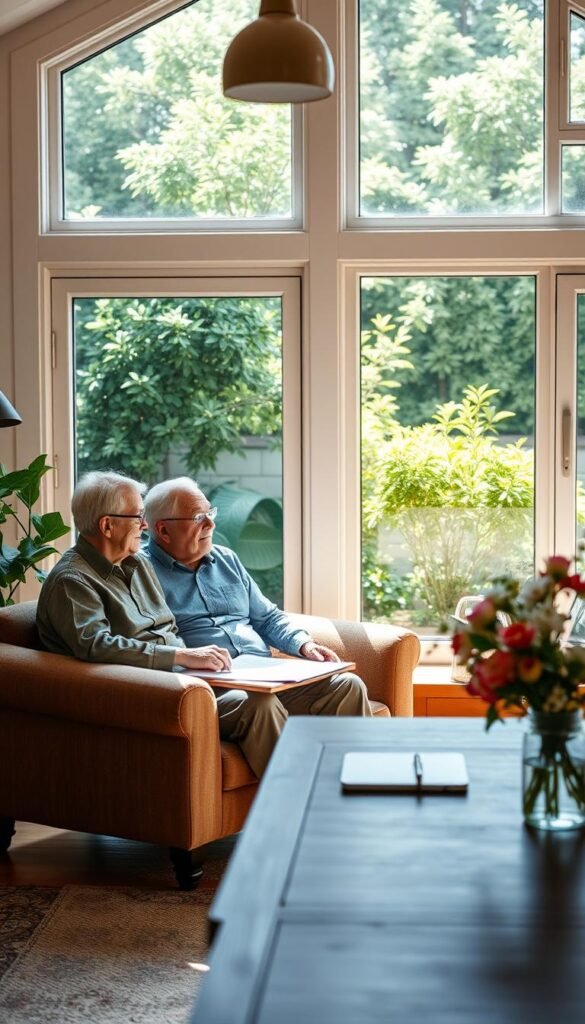
Building Shared Vision Through Daily Habits
O’Neill’s “relationship blueprint” method helps partners align goals. Couples dedicate 15 minutes daily to discuss values and dreams. Weekly check-ins address practical needs like chore distribution. Monthly assessments track progress on shared objectives.
| Expert Strategy | Action Steps | Common Mistake |
|---|---|---|
| Co-Soothing Practice | List 5 calming actions for partners | Assuming needs are obvious |
| Space Negotiation | Color-coded zone schedules | Informal arrangements |
| Conflict Prevention | Pre-planned “reset” rituals | Reactive problem-solving |
Customized Solutions for Unique Partnerships
Outdoor enthusiasts might designate hiking trails as mediation spaces. Book lovers could create reading shifts using noise-canceling headphones. O’Neill emphasizes: “Effective strategies match your lifestyle, not generic advice.”
Partners should practice calming techniques during peaceful moments. Try these steps:
- Exchange written lists of preferred comfort methods
- Schedule three non-conflict practice sessions weekly
- Create visual reminders for chosen strategies
These methods help transform tight quarters into relationship laboratories. As O’Neill notes: “Space constraints become connection catalysts when approached intentionally.” Couples considering compact living should complete compatibility assessments addressing communication styles and personal boundaries.
Conclusion
Modern partnerships thrive in compact homes through deliberate connection strategies. Shared goals and smart design turn spatial limits into relationship assets. Success stories prove small dwellings foster big emotional rewards when partners prioritize mutual understanding.
Essential practices include scheduled check-ins and personalized space solutions. Outdoor areas become relationship reset buttons, while mobile options offer literal fresh starts. Financial freedom and simplified routines create room for shared growth.
Not every pair adapts seamlessly – self-awareness determines outcomes. “Our home became a mirror reflecting what needed work,” admits one tiny dweller. Those who succeed treat closeness as collaboration rather than confinement.
Compact living demands reimagined boundaries and creative compromises. Yet 84% of surveyed partners report stronger bonds after two years. With thoughtful preparation, limited square footage can expand relationship potential beyond traditional housing norms.
Are you looking to start a family? Please be sure to check out Can Parents Comfortably Raise a Baby in a Tiny Home?


